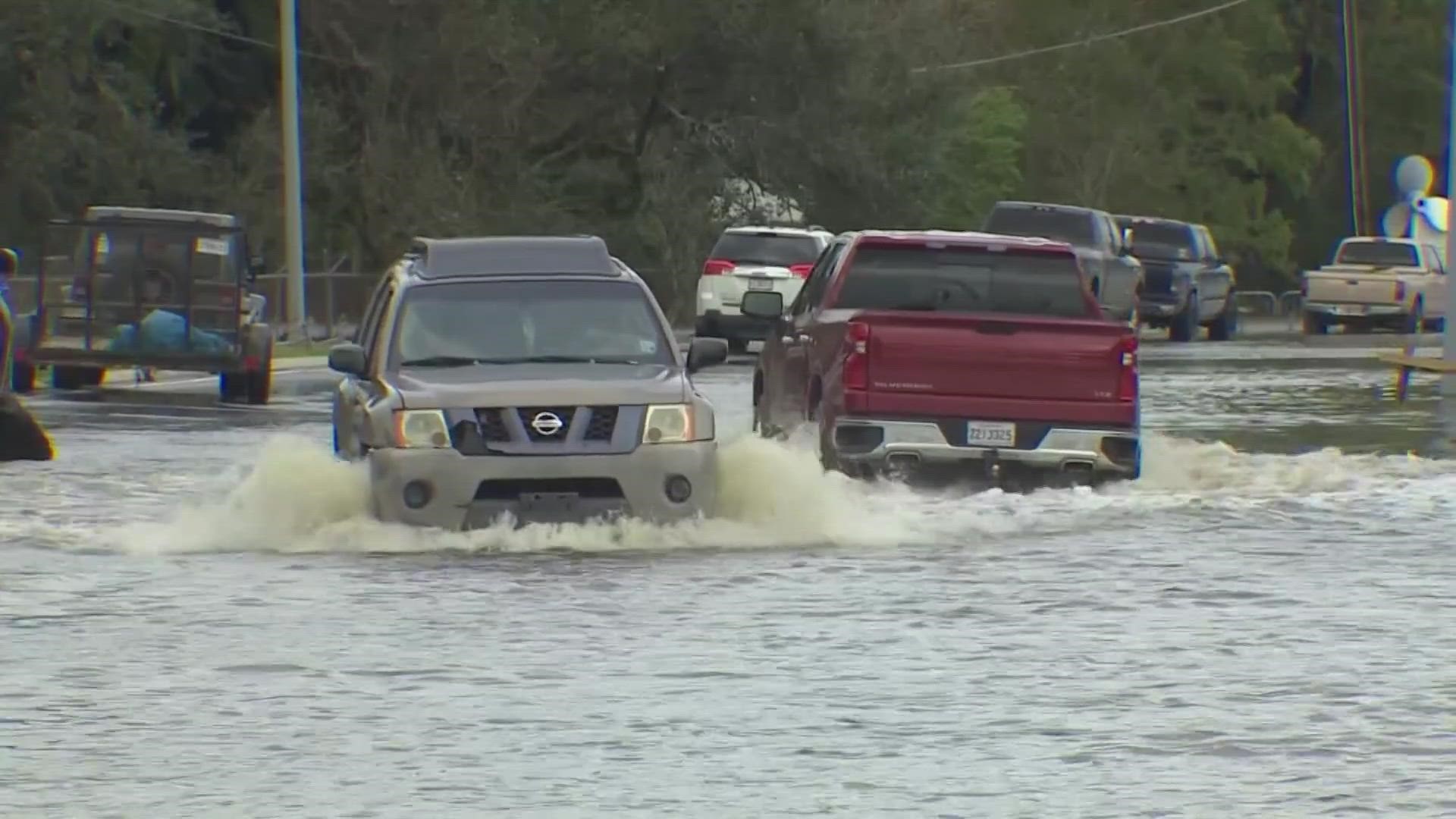ST. TAMMANY PARISH, La. — An estimated 1.2 million people call Lake Pontchartrain's shores home, including residents of St. Tammany Parish.
When storms threaten southeast Louisiana, folks living around the lake brace themselves.
“Being on the north shore on the north side of Lake Pontchartrain, typically the storm surge comes from the south, southeast and it pushes water inland along low-lying areas from Madisonville, to Mandeville, to Lacombe and Slidell. And all points in between. And even up the rivers it pushes water into low-lying areas," St. Tammany Parish President, Mike Cooper, said. “And we want to be able to minimize that storm surge with a project that benefits not only St. Tammany Parish but parishes that’s around Lake Pontchartrain.”
St. Tammany Parish President, Mike Cooper, led the regional planning commission last fall when all eight parishes surrounding the lake unanimously approved a resolution requesting the Lake Pontchartrain Barrier Project move forward.
“It’s a process but we’re a step closer," Cooper said.
When a storm hits, gates at the Rigolets and Chef Menteur would close. With a levee built in between, it would create a line of defense between the Gulf of Mexico and the communities surrounding the lake.
"We prepare for the worst and it’s difficult to prepare for storm surges that come in inland blocks and blocks of city blocks," Cooper said. "And we wanted to be able to address some long-term solutions.”
This solution has been a long time coming. The resolution that was passed in September of 2022 state there was "local opposition" in the 1960s and 70s to the project.
Dr. Robert Thomas, an environmental scientist and professor at Loyola University, remembers the uproar.
“I knew all the players. I did know and have first-hand conversations with all the players in that project," Thomas said.
Some of the concerns centered around the ecological impact of Lake Pontchartrain, according to Thomas.
“They looked at it and they said this you know could be something that if the Corps just goes out and helter-skelter builds this thing, it could destroy the fisheries of Lake Pontchartrain and lots of other values of Lake Pontchartrain," Thomas said, “This was 1970. Which was a critical year. If you go back and look at all the major legislation we have in the environment, it was just coming out.”
According to Thomas, environmental groups wanted the Army Corps of Engineers to do an environmental impact study, but instead of doing so, the project dissipated.
“I wish they had done it, but being an environmental person, I would have been terrified also of the possible ramifications. The ecological ramifications," Thomas said.
Fast forward 35 years later, and Hurricane Katrina is raving the coast. Thomas said the storm may not have been as bad if this project was already complete.
“No, I don’t think it would have been," Thomas said. "But they made a choice, and they decided not to do it.”
With St. Tammany leading the charge, local governments are now calling on new studies and modeling to be done.
After that, money will be requested from the federal government to begin building.
The estimated price tag is $2.4 billion.
“That’s a rough a rough number," Cooper said. “What’s expected in annual damage reduction benefits ranges between $1.2-$1.4 billion. So, in essence, it would pay for itself in 2 to 3 years.”
The Coastal Protection and Restoration Authority estimates the project would protect:
- 5,800 residences
- 39 schools & daycares
- 4 hospitals
- 20 nursing homes
- 6 power stations
- 16 gas stations
Cooper said the project won't be done overnight.
“Well, I would say it’s going to be a number of years, maybe five to ten years," Cooper said.
The project adds to the levees and canals already in place.
"It’s like when you put a puzzle together you always get down to the last piece that’s not there yet, and that’s sort of what this project will be," Thomas said.
► Get breaking news from your neighborhood delivered directly to you by downloading the new FREE WWL-TV News app now in the IOS App Store or Google Play.

